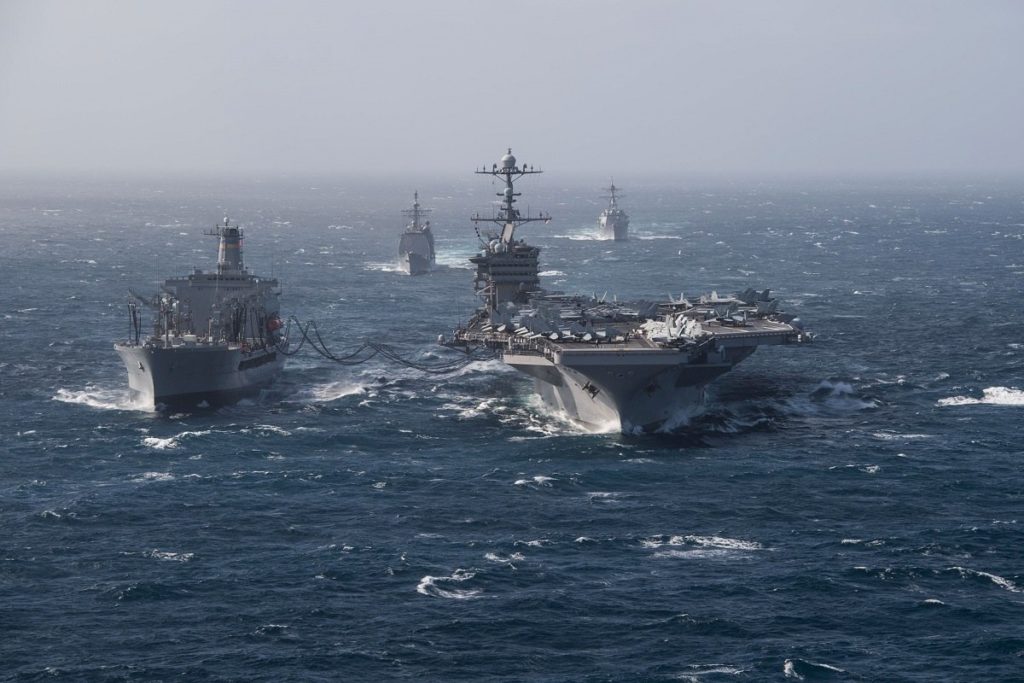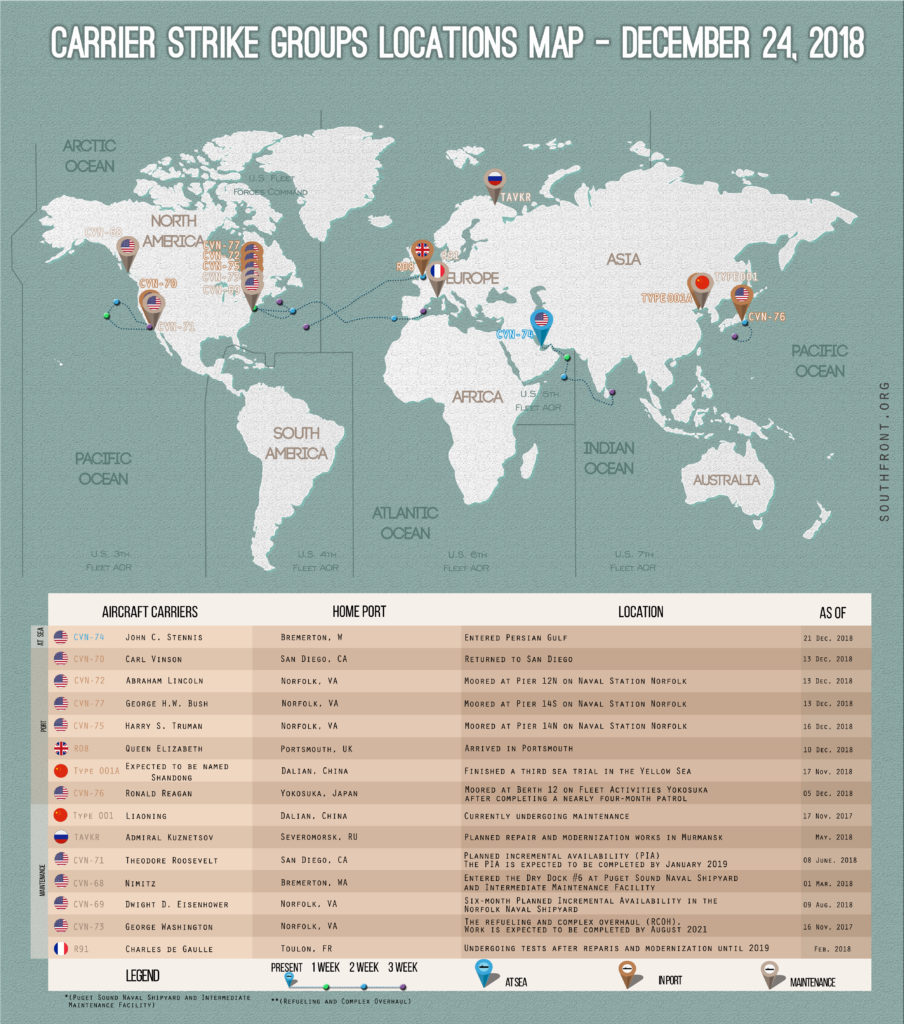On December 21st, the USS John C. Stennis became the first US aircraft carrier to sail into the Persian Gulf since the US withdrew from the Iran Nuclear Deal in May.
Throughout the USS John C. Stennis’ trip on December 21st, approximately 30 Iranian Revolutionary Guard vessels trailed it and its strike group. One small vessel launched what appeared to be a commercial-grade drone to film the American ships. Photographers and videographers on the Iranian boats could clearly be seen also filming the Stennis while journalists on board the aircraft carrier filmed them.
“The Iranian craft drove in front of our ship and stopped, and tried to capture their own sort of picture of what was going on,” said Capt. Randy Peck, the commanding officer of the Stennis.
AP also reported that some of the vessels shot rockets away from the aircraft carrier, however, no quotes were provided by any official person.
As the US is pulling out of Syria and is reducing operations in Afghanistan, the necessity for an aircraft carrier in the Persian Gulf is questionable. However, Peck claimed that it is proof that the US is showing commitment to regional stability with the move.
“The American Navy is showing they’re committed to regional stability all across the globe but particularly in the Gulf region,” Peck said. “It’s a very economically important area for the entire world, so we’re going to continue to go wherever we can internationally, in international waters.”
On the Iranian side, the Managing Director of Iranian Defense Ministry’s Marine Industries Organization Rear Admiral Amir Rastegari said that the US aircraft carrier being approached by Iranian vessels was lawful and nothing out of the ordinary.
“Basically, whenever a vessel enters the Persian Gulf region, because it passes through the Strait of Hormuz and our territorial waters, according to maritime conventions, its arrival and even departure time, nationality, mission and destination are inquired and ascertained,” Rastegari said.
Furthermore, on December 22nd, IRGC Navy Commander Real Admiral Alireza Tangsiri denied any allegations that the IRGC vessels fired any rockets around the aircraft carrier.
“The Americans are used to telling lies … Shooting rockets at US aircraft carrier in the Persian Gulf is a blatant lie.”
“The American forces are present in the region, but they are not in our waters,” he added.
The aircraft carrier sailed one day before military exercises by the Islamic Revolution Guards Corps (IRGC) in the Persian Gulf and the Strait of Hormuz.
Reportedly the Great Prophet 12 exercises entered their final chapter in the region and they included an “offensive” component in Iran’s defensive strategy for the first time.
IRGC chief General Mohammad Ali Jafari saying “we hope the enemies have more than ever grasped the power of our response.”
“This was a response to allegations made by the enemies who should know that the defense capabilities of the Islamic Republic of Iran are deterrent, and as the Eminent Leader [Ayatollah Seyyed Ali Khamenei] has said, ‘if they try to hit us once, they will definitely be hit 10 times more’,” Jafari said.
The IRGC Ground Force’s chief Brigadier General Mohammad Pakpour said the drills take place on a strategic and defensive level proportionate to the enemies’ potential threats.
“For the first time, the drills incorporate an offensive operation in the Islamic Republic’s defensive doctrine,” he said.
“On the operational level, these maneuvers are offensive, meaning should the enemy seek to resort to threat and its implementation, it will prompt us to turn thoroughly aggressive and offensive, and pursue targets deep inside the enemy front,” Pakpour added. The goal, the commander said, is to “crystallize a precise and realistic image in the enemy’s mind of our deterrence and defensive equations.”
This can be seen as a sign of rising tensions, as Iranian President Hassan Rouhani on December 4th threatened to close the Strait of Hormuz if the US blocks the Islamic Republic’s oil exports.
Iranian state TV quoted Rouhani as saying on December 4 that “if someday, the United States decides to block Iran’s oil [exports], no oil will be exported from the Persian Gulf.”
Rouhani also vowed that the United States would not be able to prevent Iran from exporting its crude oil.
Brian Hook, the U. special representative for Iran, dismissed Rouhani’s threat, saying that Tehran did not control the Strait of Hormuz.
“The strait is an international waterway. The United States will continue to work with our partners to ensure freedom of navigation and the free flow of commerce in international waterways,” Hook said.







